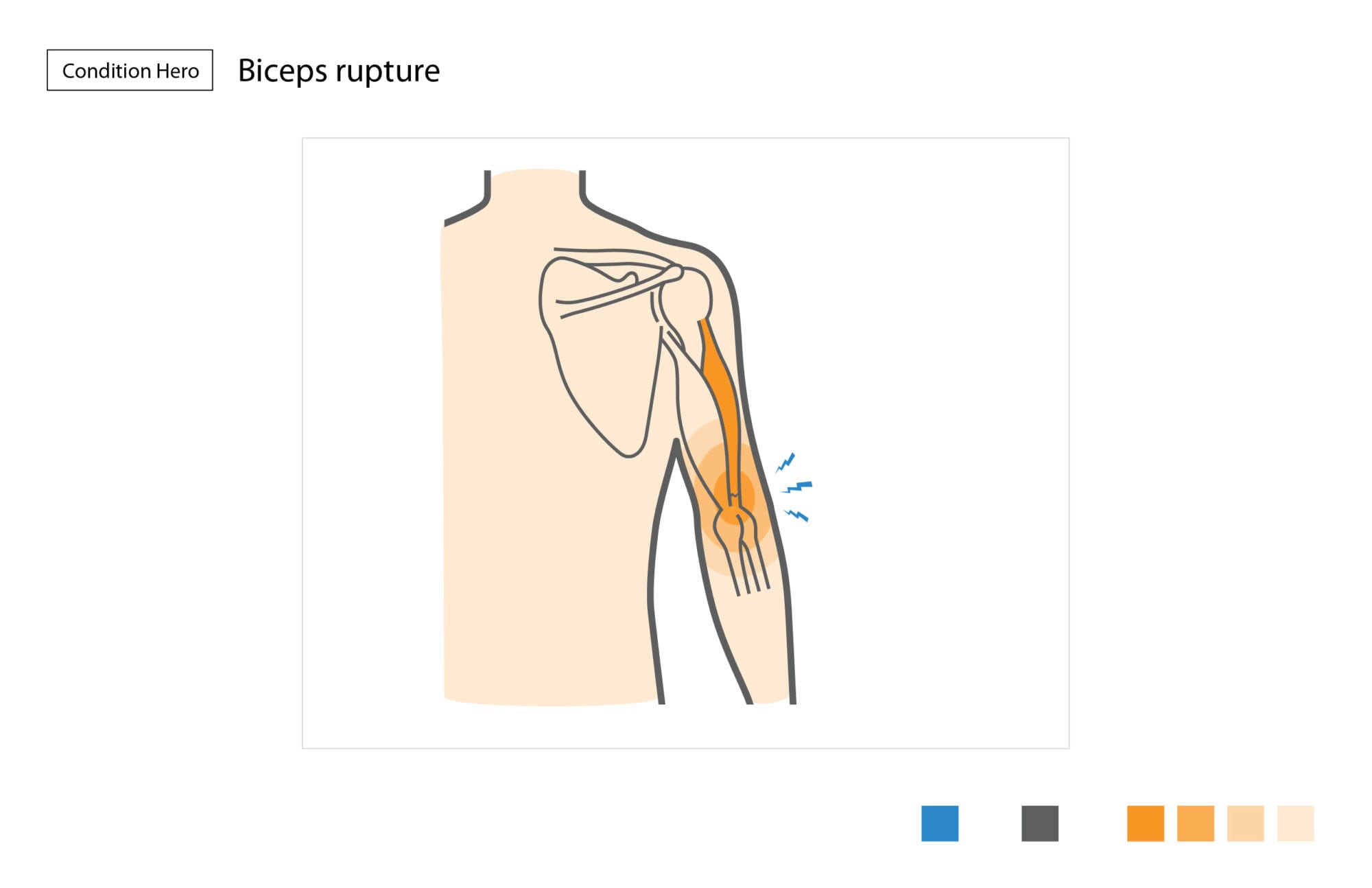The tendon that connects to the elbow is called the distal biceps tendon. Though uncommon, this tendon can rupture, usually due to a sudden injury. Surgery is generally needed to repair the ruptured tendon.
Distal Biceps Rupture Causes, Symptoms & Treatment Options
The tendon that connects to the elbow is called the distal biceps tendon. Though uncommon, this tendon can rupture, usually due to a sudden injury.
Overview
Overview

What causes Distal Biceps Rupture?
Distal bicep tendon ruptures occur due to an injury to the tendon, such as when an athlete lands on an outstretched arm. This injury also often occurs when lifting something very heavy, forcing the bent elbow straight.
Men 30 years or older, particularly those who are “weekend warriors,” are at greater risk for this injury.
Biceps rupture at the elbow is common in these sports:
- Weightlifting
- Football
- Hockey
- Lacrosse
- Rugby
Symptoms
When the biceps tendon ruptures, often a pop or tear is heard. The muscle may appear to ball up with a biceps tendon rupture at the elbow, but not as often as this occurs with biceps ruptures at the shoulder level. Bruising in the elbow and forearm often also occur, and it is usually difficult to flex or bend the elbow.
When to see a doctor
If you experience these symptoms, you should see your doctor right away — prompt treatment will be essential to a positive outcome. Your doctor will take a detailed medical history. To make a diagnosis, your doctor will examine your arm and elbow to check for a gap in your tendon. He/she will also look for swelling in the front of the elbow and tenderness over the biceps.
To help confirm the diagnosis, your doctor may recommend imaging tests. Magnetic resonance imaging (MRI) tests provide good images of soft tissues, like the biceps tendon, to help confirm a partial tear or rupture. X-rays are usually not necessary, but may sometimes be used to rule out other causes of your symptoms.
Non-operative treatment
Initially, treatment of a ruptured bicep will include rest, ice, and splinting. Your doctor may prescribe a nonsteroidal anti-inflammatory drug, like aspirin or ibuprofen, for pain relief and to reduce inflammation. Sometimes, especially in the case of a partial rupture, surgery is not necessary. If you decide to treat your distal biceps rupture non-operatively, you will generally regain most of your strength but may have some weakness, especially with repetitive activities.
Try these exercises to help address your condition:
Below is a PDF of the Exercise Program
Surgical Treatment
Surgery is usually recommended to reattach the tendon. To be effective, surgery should be conducted within two to three weeks of the injury due to the formation of scar tissue and retraction of the tendon. If performed within this time frame, surgery is generally successful. Your surgeon will make a small incision over the front of your elbow and find the detached end of the biceps tendon. Your surgeon will then find the area where it was detached, drill a small hole in the bone, and re-attach the tendon to the bone. Complications from surgery, such as numbness felt in the forearm, tend to be rare and temporary.
Recovery
After surgery, you can expect to wear a splint or brace to allow the wound to heal. Your doctor will advise you on a rehabilitation plan that begins with gradual, light activity. A full return to sports is expected, but not for at least three to six months after surgery — particularly for sports involving contact or lifting. If the treatment course is followed properly, athletes can expect a full recovery and return to their normal activity.

